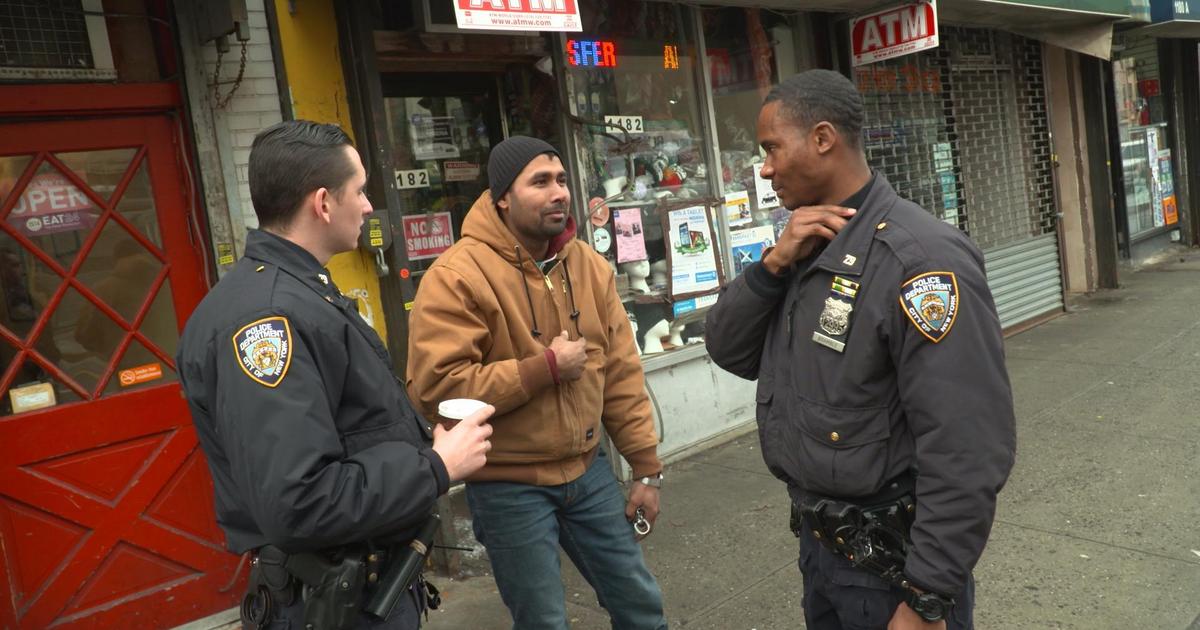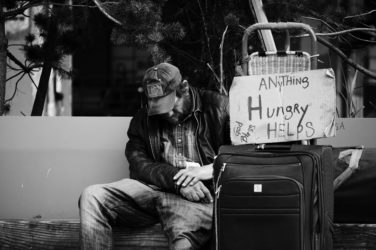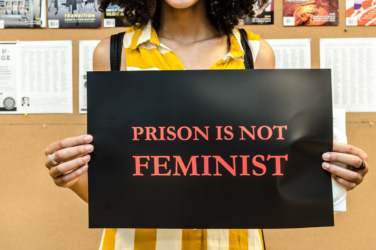Oluwadurotimi Oyebola, 16, was enjoying a warm day after school in Brownsville, Brooklyn on September 21. He was playing basketball with his friends at a local park.
Without warning, while he was on the court taking some jump shots, a couple of gunshots were fired. Oyebola was hit in the head and killed.
Police said at the time that Oyebola, known as Timi, was not the intended target and that the shooter was likely trying to hit someone else.
A memorial was held for Timi on October 1. The junior high school student was noted for his academic achievements at Brooklyn Ascend High School, and was a member of the basketball team.
On October 3, 14-year-old Aaron Nathaniel was arrested and charged with second-degree murder, after surveillance footage apparently showed him shooting into the park.
Technological evidence might turn out to be conclusive in this case. But the investigation also deployed specialized officers whose methods are based on relationship-building and intelligence-gathering in the local community—and whose existence is ever more prevalent, if controversial.
Resurgence of an Old Idea
The Neighborhood Coordinating Officers (NCOs) who work in Brownsville are part of the New York Police Department’s (NYPD) wider program for community policing, which was introduced in 2015. The 73rd precinct, which includes Brownsville, was the first precinct in Brooklyn to get these officers.
According to the NYPD, community policing is “a philosophy that promotes organizational strategies that support the systemic use of partnerships and problem-solving techniques to proactively address the immediate conditions that give rise to public safety issues such as crime, social disorder and fear of crime.”
In plainer terms, NCOs are meant to walk around their neighborhood and build face-to-face relationships with community members, being familiar and approachable in order to earn trust. In working to make communities safer, they’re supposed to address a wide range of concerns beyond violent crimes.
The idea of community policing is not new. It came to prominence in the 1990s. As journalist Mark Obbie writes: “The idea was simple: Walking a beat and chatting up residents would build stronger relations and avoid the sort of anger that the not-guilty verdict for the officers who beat Rodney King uncapped in Los Angeles in 1992.”
A 1994 editorial for the New York Times stated:
“Community policing is the most promising trend in urban law enforcement. It aims to involve police departments in crime prevention, not just crime reaction, by assigning more officers to street patrol, exposing them to neighborhood concerns and training them to identify troubled individuals and bring in social service agencies to provide help.”
That same year, the federal Office of Community Oriented Policing Services (COPS) was created in order to disperse $8.8 billion in funding created by the Violent Crime Control and Law Enforcement Act. “By the end of the 1990s,” writes Obbie, “most police departments across the nation, flush with billions in federal grants, employed community-oriented-policing specialists and proclaimed it a part of their core mission. Then, as “federal money shifted to antiterrorism policing after 9/11, community-oriented policing morphed in many places into the same tactics it was meant to displace.”
The model saw a resurgence around 2015, when, in the wake of protests in Ferguson, Missouri—after Darren Wilson, a white cop, shot dead Michael Brown, a black unarmed teenager—the Obama administration published recommendations from its “Task Force on 21st Century Policing,” in which “community policing” featured heavily.
Higher Headcounts, Demographic Disparities
Police departments from Los Angeles to New York, Philadelphia and Minneapolis adopted procedures in line with the recommendations. Usually the measures increased police presence; in February 2015, for example, the New York City Council added 1,000 new cops to the NYPD, saying that “a higher headcount” was required “to carry out more community policing.”
But it’s unclear if this increase, or any aspect of community policing, is meant to address the gaps between the demography of a community and that of its police force, which became a prominent theme in coverage of Ferguson. The St. Louis suburb was two-thirds black, but its police department was overwhelmingly white—only three of 53 officers were black. A 2015 investigation by the New York Times found that in hundreds of police departments across the country, whites on the force were overrepresented by more than 30 percent compared with the communities they served.
Some experts and advocates say that, rather than addressing concrete issues such as demographic disparities, community policing is merely a euphemism for “more intensive and invasive policing of minor disorderly behavior that serves to criminalize mostly people of color without dealing with the underlying causes of this behavior like poverty, homelessness, problematic drug use, mental health issues, and more.”
“It’s tricky because it takes so many forms and it is so vaguely defined.”
Alex Vitale, a professor of Sociology at Brooklyn College and the co-author of the above quote, says the term “community policing” is simply unclear. “It’s tricky because it takes so many forms and it is so vaguely defined,” he told Filter. We can’t draw conclusions about its effectiveness because we do not know what it means.”
Professor Vitale asserts that crime reduction cannot and should not be the only metric for evaluating policing methods. “We can put a police officer on every corner and you might see a reduction in crime, but it’s not a result of ‘community policing.’”
Some community leaders in New York, however, feel that the NCOs have been a valuable addition. “I’ve had very positive experiences with the NCOs,” said Anthony Newerls, the president of the 73rd precinct community council. “I think the officers have shown great initiative in building relationships with people.”
Shaka Mandela, an electrician who has lived in Brownsville his whole life, broadly agrees. He says that he sees something in these officers that he hasn’t seen previously. “They talk to people, they interact with folks,” he told me. “I know they’re only doing it so people will talk to them when things go down, but it’s still nice for the community.”
Can Community Policing Be Credited for Falling Crime Rates?
Former Dallas police chief David Brown has no doubt that community policing has been beneficial where adopted—although he also advocates the establishment of federal standards to rationalize and improve implementation. “I think there is a strong argument that community policing reduces crime,” he said. “New York is exhibit A. This is the best example that crime has decreased under community policing.”
The NYC crime rate has been steadily declining over the last few years. 2017 saw just 290 murders, the lowest since the 1940s. This apparent success of the NCO program—although isolating NCOs as the cause is impossible—has prompted other cities to try and mimic it.
Chief Brown concedes that there’s no way to measure relationships, but he believes that falls in crime rates in communities where police departments have adopted this model can be attributed to it.
But Vitale emphasizes that there is simply no metric to measure the specific impact of NCOs. “We don’t have any actual evidence and we don’t know what they’re actually doing,” he said. “Show me an example of how an NCO has helped a community without doing police work.”
Los Angeles is another city that has gone through a period of change in its police department, trying to improve relations and reduce the number of police-involved shootings.
“Community policing is kind of…a cover for the incredible militarization of the police.”
Aaron Roussell, an assistant professor of sociology at Portland State University, spent five years in Los Angeles studying the LAPD’s community policing protocols. He says there is no correlation between crime reduction and policing, and suggests that community policing might have a negative purpose. “Police departments capitalize on the idea that policing reduces crime. Community policing is kind of…a cover for the incredible militarization of the police.”
In his research, Roussell found that the community board meetings that the police would hold were comprised of the same kind of people: usually older men and women, civil rights activists and business owners. “These spaces didn’t represent the real demographic of the community.”
The LAPD disagrees. “We try to make sure we have a wide array of people at our community board meetings,” a spokesperson said. “We want to make sure we are reaching the entire community with our efforts.”
According to the California State’s Attorney’s office, 157 people died during encounters with the police in the state in 2016, of whom one third were in LA County. That total fell to 78 in 2017.
While crime rates are down across the country, Roussell argues that those rates, including murder statistics, are misleading. “Every time a cop kills someone, that does not make it into the crime rate,” he told me. “Murders that happen in prison aren’t accounted for, either.”
Should We Aim for More Police Involvement, or Less?
Roussell believes that to reduce harms, rather than trying to get more involved in communities, police departments should instead look at what they can cut back on.
“Social workers should have a bigger role in these communities, and police do not like to be social workers.”
“I think the place to start would be to make a list of all the things police do and people should pick what they want to retain and the other stuff could go out to other agencies,” he said. “Social workers should have a bigger role in these communities, and police do not like to be social workers.”
Sergeant Steven Shank of the Detroit Police Department would disagree. He oversees a team of NPOs—Neighborhood Police Officers—in the downtown area of Detroit. He describes elements of his job as finding housing for homeless people and taking senior citizens to the movies through his original “Senior Scams and Cinema” program, which includes cut-price tickets and an anti-fraud presentation.
He feels he has gained trust among the large homeless population in his area. They know, he told Filter, “that you’re not there to lock them up for trespassing…right away.”
For so long, he said, no one has been connecting this population to healthcare or housing services. But now? “Well now, it is my concern. I’m the neighborhood police officer; I’m gonna be the one who’s gonna see [a homeless person] again, and my heart can’t let him be out there like this.”
Formerly homeless people have defended him against criticism from those suspicious of the police, he added. “Don’t talk to Shank like that,” they say, “I’m in an apartment right now because of him.”
“The relationships are priceless,” Shank said. “No [other] type of policing out there creates that type of bond.”
No one can argue with the benefits of connecting homeless people with housing and care, or helping seniors. But what is the specific benefit of having a police officer doing those tasks, as opposed to a social worker or other professional who doesn’t carry a gun?
“The main thing,” said Sergeant Shank, “is seeing the officer in that different light. Being able to see the officer as not just an enforcer locking people up, taking them to jail.”
“If I were to have to go out and do my job…whether I lock someone up or have to defend some other citizen with my firearm, [because of] the relationships you’ve built, [people say] ‘I hear people in the media are saying this, saying that. That might be true of someone else, but not my Officer Shank. I’ve seen his heart. I’ve watched him pour out himself in this community.’”
“It takes the target off your back, as a police officer.”
“See how it fights that negative target?” Shank concluded. “It takes the target off your back, as a police officer.”
His words mirror language in the Obama administration’s original recommendations, which advocated for community policing in part because it “makes officers safer.”
Many will object to any notion that police, rather than specialized outreach workers with extended training in mental health, ought to take on more social-work roles—or that it’s possible for the police to do so without further increasing criminalization of targeted populations. Many others will contend that more socially conscious policing—which takes many different forms, such as law enforcement-assisted diversion (LEAD)—can be a real-world way to reduce the harms of criminalization.
Either way, as the Trump administration pushes “tough on crime” strategies—Trump this week recommended stop-and-frisk as the solution to Chicago’s violence—it has never been more important for citizens to pay attention to what the police are doing.
In Brownsville, police may have apprehended the suspect in the shooting of Timi, but locals still question the role of NCOs.
“They’re out here doing their police work to try and find this kid, even the NCOs,” Shaka Mandela said. “In that case though, what makes them any different than a regular cop, you know?”
Photo: “NCOs walking the beat” via CBS News.





Show Comments